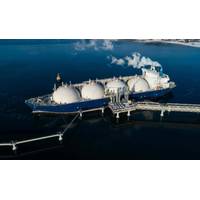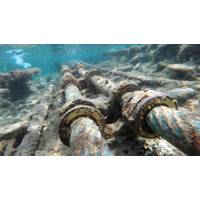Flying More Energy Efficient than Driving?
Flying has become less energy intensive than driving, at least in the United States, according to the surprising findings of an analysis of energy consumption by the University of Michigan's Transportation Research Institute.
Transporting one person a distance of one mile by aircraft consumed on average the energy equivalent to 2,465 British thermal units (BTUs), compared with 4,211 BTUs for moving one person one mile by car, in 2012.
If fuel use is adjusted to account for commercial freight and mail carried on passenger aircraft, flying consumed just 2,033 BTUs per person mile, according to researcher Michael Sivak.
One BTU is formally defined as the amount of energy needed to raise the temperature of one pound of water by one degree Fahrenheit. Informally, it is roughly the energy released by burning a kitchen match.
A gallon of gasoline contains roughly 124,000 BTUs, a gallon of jet fuel about 135,000 BTUs and diesel almost 139,000 BTUs.
Sivak's research shows driving consumed 71 percent more energy per person-mile than flying in 2012, or more than double if flying data are corrected for cargo ("Energy intensities of flying and driving" April 2015).
Aviation still has a reputation for being a particularly energy-intensive mode of transportation for moving people but Sivak's findings suggest that reputation may no longer be deserved.
At the start of the 1970s, aircraft were particularly inefficient and consumed twice as much fuel per person-mile than passenger cars (http://link.reuters.com/sek64w).
Since then, however, the amount of energy consumed per passenger-mile by aircraft has fallen by almost 80 percent while the efficiency of driving has improved by less than 17 percent.
The crossover point, when aircraft became less energy-intensive than cars, occurred around the turn of the millennium.
EFFICIENCY TRENDS
The switchover in energy intensity is the result of several trends which have tended to make flying more efficient but have had a much more ambiguous effect on driving.
New aircraft are much more fuel efficient than the ones they replaced. Airlines have learned to operate them using less fuel by cutting the amount of unnecessary weight carried on board. And seat occupancy is much higher than it was in previous decades.
In contrast, cars have become heavier and more powerful and they are much more likely to be occupied by just the driver rather than passengers. Carpooling on the way to work, for example, has become much less common than it was in the 1970s and 1980s.
There are several important qualifications to this analysis. The data is based on the United States, famous for its larger and more powerful passenger vehicles. Cars in the European Union and Japan, where vehicles tend to be smaller and lighter, consume far less energy per passenger mile.
Sivak's research is an important reminder about the effect that choices about energy efficiency, vehicle size and engine power have on fuel consumption.
The analysis is also sensitive to trip length. The average length of a driving trip is just 9 miles while an average flight is 914 miles -- 100 times longer.
Short car journeys tend to be much more energy-intensive than longer ones because they are more likely to occur on urban roads (with lots of starts and stops) and have a single occupant.
Longer car journeys ones on the freeways and interstate network are more fuel efficient and more likely to involve multiple occupants, which cuts energy consumption per person-mile dramatically.
But aircraft are also more fuel efficient over longer journeys than shorter ones because so much fuel is consumed during the takeoff phase. By some estimates, takeoff can account for as much as a quarter of the fuel consumed on a short flight.
MOBILITY DEMAND
Sivak's analysis reveals some important truths about energy consumption and transportation. First, energy consumption is directly related to the demand for mobility, a point which is often underplayed in discussions about energy and climate change.
Aviation tends to account for a very high share of per capita fuel consumption and per capita greenhouse emissions not because aircraft are inefficient but because of the long distances involved in air travel compared with other modes of transport such as cars.
Rising fuel consumption and greenhouse emissions stem from an increase in demand for very long distance travel - especially intercontinental flights and among middle and lower income groups -- which are a central part of a modern, interconnected world.
Second, modes of transport are not inherently efficient or inefficient. Better design can result in substantial efficiency improvements. The way in which modes of transport are operated is at least as important as their physical construction. And regulations and fuel prices have an important role to play driving energy efficiency.
At a global level, demand for mobility is set to increase significantly in the decades ahead. As a higher share of the world's population moves out of extreme poverty into middle income status, they too will want to travel long distances for work, leisure and to visit friends and family, and to consume products made far away, which implies an enormous increase in transport demand.
One option is to restrain the demand for mobility through regulations and actions designed to make transport much more expensive (such as increasing the cost of fuel through taxes or emissions charges).
Another is to shift people and products from transport modes with high energy intensity (such as aircraft) to ones which consume less fuel per passenger-mile (such as rail), though Sivak's analysis raises questions about some of the assumptions commonly made about the energy intensity of different modes of transport.
The third option, and in many ways the most promising, is to improve fuel efficiency within existing modes of transport. Sivak shows this course holds enormous promise through improvements in design and choices about how transport modes are operated.
Airlines have become more fuel efficient, in part, because they have cut excess weight and raised seat occupancy to record levels. Cars on the other hand, at least in the United States, have become heavier and drive around with most of the seats empty.
Improvements in transport design and operation offer the best hope of meeting the world's growing demand for mobility while curbing greenhouse emissions.
Efficiency improvements are, in turn, linked to the price of fuel and government regulations. The three approaches to curbing emissions (fuel pricing, mode shifting and enhanced efficiency) are complements rather than substitutes.
Nonetheless, the biggest reductions in greenhouse emissions are likely to come from using existing transport systems more efficiently, rather than trying to force people to stay at home by making travel dramatically more expensive.
By John Kemp







